Robert Schumann
Story
Robert Schumann (born June 8, 1810, Zwickau —died July 29, 1856, Endenich), German Romantic composer renowned particularly for his piano music, songs (lieder), and orchestral music. Many of his best-known piano pieces were written for his wife, the pianist Clara Schumann.
Schumann’s father was a bookseller and publisher. After four years at a private school, the boy entered the Zwickau Gymnasium (high school) in 1820 and remained there for eight years. He began his musical education at the age of six, studying the piano. In 1827 he came under the musical influence of the Austrian composer Franz Schubert and the literary influence of the German poet Jean Paul Richter, and in the same year he composed some songs.
In 1828 Schumann left school and, under family pressure, reluctantly entered the University of Leipzig as a law student. But at Leipzig his time was devoted not to the law but to song composition, improvisation at the piano, and attempts to write novels. For a few months he studied the piano seriously with a celebrated teacher, Friedrich Wieck, and thus got to know Wieck’s nine-year-old daughter Clara, a brilliant pianist who was just then beginning a successful concert career.
In the summer of 1829 he left Leipzig for Heidelberg. There he composed waltzes in the style of Franz Schubert, afterward used in his piano cycle Papillons (Opus 2; 1829–31), and practiced industriously with a view to abandoning law and becoming a virtuoso pianist—with the result that his mother agreed to allow him to return to Leipzig in October 1830 to study for a trial period with Wieck, who thought highly of his talent but doubted his stability and capacity for hard work.
Schumann’s Opus 1, the Abegg Variations for piano, was published in 1831. An accident to one of the fingers of his right hand, which put an end to his hopes of a career as a virtuoso, was perhaps not an unmitigated misfortune, since it confined him to composition. For Schumann, this was a period of prolific composition in piano pieces, which were published either at once or, in revised forms, later. Among them were the piano cycles Papillons and Carnaval (composed 1833–35) and the Études symphoniques (1834–37; Symphonic Studies), another work consisting of a set of variations. In 1834 Schumann had become engaged to Ernestine von Fricken, but long before the engagement was formally broken off (Jan. 1, 1836) he had fallen in love with the then 16-year-old Clara Wieck. Clara returned his kisses but obeyed her father when he ordered her to break off the relationship. Schumann found himself abandoned for 16 months, during which he wrote the great Fantasy in C Major for piano and edited the Neue Zeitschrift für Musik (New Journal for Music), a periodical that he had helped to found in 1834 and of which he had been editor since early 1835. In 1837 Schumann formally asked Clara’s father for permission to marry her, but Wieck evaded his request. The couple were finally married in 1840 after Schumann had gone to court to set aside Wieck’s legal objection to the marriage.
Schumann had by now entered upon one of his most fertile creative periods, producing a series of imaginative works for piano. Among these are the Davidsbündlertänze (composed 1837), Phantasiestücke (1837), Kinderszenen (1838; Scenes from Childhood), Kreisleriana (1838), Arabeske (1838), Humoreske (1838), Novelletten (1838), and Faschingsschwank aus Wien (1839–40; Carnival Jest from Vienna). Schumann wrote most of Faschingsschwank while on a visit to Vienna, during which he unearthed a number of manuscripts by Franz Schubert, including that of the Symphony in C Major (The Great). In 1840 Schumann returned to a field he had neglected for nearly 12 years, that of the solo song; in the space of 11 months (February–December 1840) he composed nearly all the songs on which much of his reputation rests: the cycles Myrthen (Myrtles), the two Liederkreise (Song-Cycles) on texts by Heinrich Heine and Joseph Eichendorff, Dichterliebe (Poet’s Love) and Frauenliebe und Leben (Woman’s Love and Life), and many separate songs.
Clara had been pressing him to widen his scope, to launch out in other media—above all, the orchestra. Now in January–February 1841 he composed the Symphony No. 1 in B-flat Major, which was immediately performed under the composer Felix Mendelssohn at Leipzig; an Overture, Scherzo, and Finale (April–May); a Phantasie for piano and orchestra (May), which was expanded into the famous Piano Concerto in A Minor by the addition of two more movements in 1845; another symphony, in D minor (June–September); and sketches for an uncompleted third symphony, in C minor. After this the orchestral impulse was temporarily spent.
In another new departure, Schumann in 1842 wrote several chamber works, the finest being the Piano Quintet in E-flat Major. The year 1843 was marked by Schumann’s most ambitious work so far, a “secular oratorio,” Das Paradies und die Peri (Paradise and the Peri). He made his debut as a conductor—a role in which he was invariably ineffective—with its first performance in December of that year.
During Schumann’s work on The Peri, the newly founded Leipzig Conservatory had been opened with Mendelssohn as director and Schumann as professor of “piano playing, composition, and playing from score”; again he had embarked on activities for which he was unsuited. The first few months of 1844 were spent on a concert tour of Russia with Clara, which depressed Schumann by making him conscious of his inferior role. On returning to Leipzig he resigned the editorship of the Neue Zeitschrift. In the autumn of 1844 his work was interrupted by a serious nervous collapse. From late 1844 to 1850 he and Clara lived in Dresden, where his health was gradually restored. In 1845 he began another symphony, No. 2 in C Major, but because of aural nerve trouble nearly 10 months passed before the score was finished. Schumann wrote the incidental music to Lord Byron’s drama Manfred in 1848–49.
Schumann’s attempts to obtain posts in Leipzig and Vienna had also been abortive, and in the end he accepted the post of municipal director of music at Düsseldorf. At first things went tolerably well; in 1850–51 he composed the Cello Concerto in A Minor and the Symphony No. 3 in E-flat Major (the Rhenish) and drastically rewrote the 10-year-old Symphony in D Minor, ultimately published as No. 4. He also conducted eight subscription concerts, but his shortcomings as a conductor became obvious, and in 1853 he lost his post as music director at Düsseldorf.
Schumann’s nervous constitution had never been strong. He had contemplated suicide on at least three occasions in the 1830s, and from the mid-1840s on he suffered periodic attacks of severe depression and nervous exhaustion. His musical powers had also declined by the late 1840s, though some of his works still display flashes of his former genius. By 1852 a general deterioration of his nervous system was becoming apparent. On Feb. 10, 1854, Schumann complained of a “very strong and painful” attack of the ear malady that had troubled him before; this was followed by aural hallucinations. On February 26 he asked to be taken to a lunatic asylum, and the next day he attempted suicide by drowning. On March 4 he was removed to a private asylum at Endenich, near Bonn, where he lived for nearly two and a half years, able to correspond for a time with Clara and his friends. He died there in 1856.
As a composer Schumann was first and most naturally a miniaturist. Until after his marriage the great bulk of his work—including that by which he is best known—consisted of short piano pieces and songs, two genres so closely related in his case as to be hardly more than two facets of the same. The song accompaniments are often almost self-sufficient piano pieces, and the piano pieces often seem to have been melodically inspired by lyrical poems. Even when the musical idea did not originate in literature but as a waltz, polonaise, or some other striking harmonic progression found at the piano by his improvising fingers, it was usually given a quasi-literary title or brought into relationship with some literary idea.
Much of Schumann’s most characteristic work is introverted and tends to record precise moments and their moods. But another side of his complex personality is evident in the forthright approach and strongly rhythmic patterns of such works as the Toccata (1829–32) and the Piano Quintet. These two aspects are reflected in the two self-projections—the heroically aspiring Florestan and the dreamily introspective Eusebius—into which Schumann analyzed his own character and which he drew upon in an autobiographical novel, his critical writings, and much of his music.
Schumann’s early music—and much of the later—is full of enigmas, musical quotations (usually in subtle disguises), and veiled allusions. In the field of the piano miniature and the pianistic song, he is a supreme master; in the simpler kind of lyrical inspiration and in the invention of musical aphorisms, he has seldom been surpassed. When Schumann embarked on more ambitious composition under Clara’s influence, his success was less assured. He was uncertain in writing for the orchestra and relied too often on safe routine procedures; his string writing was pianistic; and his most characteristic musical ideas, which he had hitherto been content to fit together in mosaics or remold plastically by variation, were seldom suited for development on a large scale. Nor in sustained musical thought did he find a satisfaction comparable with the smaller creations of his private dreamworld. Given such innate limitations, it is astonishing that Schumann was able to construct a symphony as firmly welded as the No. 4 in D Minor or a first movement as organic as that of the Symphony No. 3 in E-flat Major, and that he could conceive orchestral music of such gloomy power as the Manfred overture or the penultimate movement of the Symphony No. 3. Some of his large-scale works, such as the Piano Concerto and the Piano Quintet, depend overmuch on the piano for their salvation, but the piano certainly saved them. Schumann did manage to create large musical forms that could communicate his own special brand of intimate poetry and unforced nobility.
It was long customary to detect in the works of Schumann’s last years evidence of his approaching collapse. But he had been mentally unstable all his life, haunted by fears of insanity since the age of 18, and the change of style noticeable in the music of the early 1850s—the increasing angularity of his themes and complication of his harmony—may be attributed to other causes, including the influence of J.S. Bach. Schumann was rightly considered an advanced composer in his day, and he stands in the front rank of German Romantic musical figures. Even his critical writing, which is as fantastic, subjective, and lyrical as his early music, constitutes a valuable document of the trend and period.
Gerald E.H. Abraham
Details
- Composer
- Robert Schumann
- Date of birth
- June 8, 1810
- Nationality
- German
- Albums
- 49
- Tracks
- 652
49 albums
-

Edward Elgar, Georges Bizet and 27 others
Beautiful Classical Melodies
-
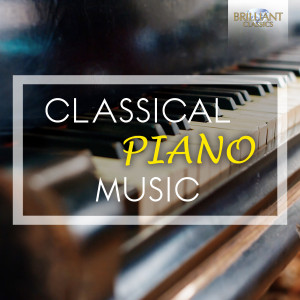
Johann Sebastian Bach, Wolfgang Amadeus Mozart and 17 others
Classical Piano Music
-
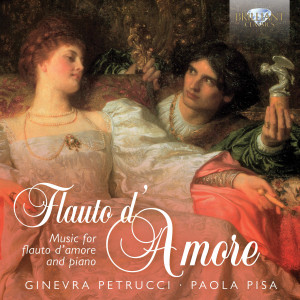
Edward Elgar, Camille Saint-Saëns and 20 others
Flauto d'Amore
-

Piotr Ilyich Tchaikovsky, Claude Debussy and 2 others
Für Elise. Piano Music for Children
-
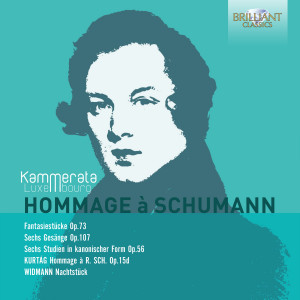
Robert Schumann, György Kurtág and Jörg Widmann
Hommage à Schumann
-
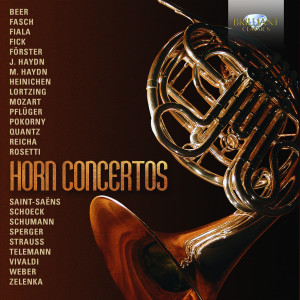
Camille Saint-Saëns, Anonymous and 23 others
Horn Concertos
-

Franz Schubert, Sergei Rachmaninoff and 4 others
Klára Würtz Plays Romantic Piano Music
-

Wolfgang Amadeus Mozart, Franz Schubert and 5 others
Klara Würtz, Super Audio Collection
-
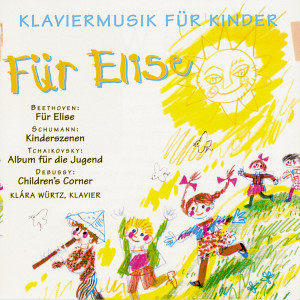
Claude Debussy, Ludwig van Beethoven and 2 others
Klaviermusik für Kinder: Für Elise
-
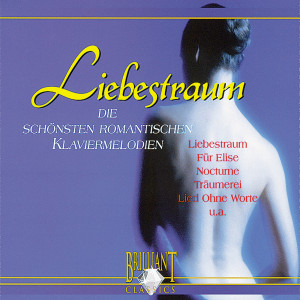
Johannes Brahms, Franz Schubert and 7 others
Liebestraum: Die schönsten romantischen Klaviermelodien
-
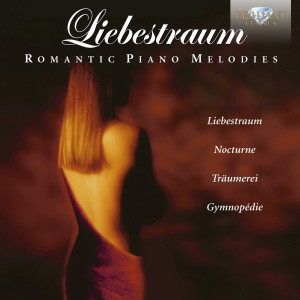
Piotr Ilyich Tchaikovsky, Wolfgang Amadeus Mozart and 10 others
Liebestraum: Romantic Piano Melodies
-

Johannes Brahms, Franz Schubert and 7 others
Liebestraum: Romantic Piano Music
-

Jean Sibelius, Robert Schumann and 4 others
Music for Viola & Piano by Reinecke, Schumann, Vieuxtemps, Wieniawski, Sibelius and Bridge
-
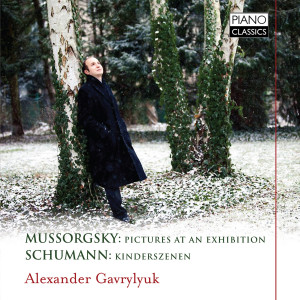
Robert Schumann and Modest Mussorgsky
Mussorgsky: Pictures at an Exhibition - Schumann: Kinderszenen
-

Piotr Ilyich Tchaikovsky, Wolfgang Amadeus Mozart and 4 others
Piano Music for Children: Kinderszenen, Children's Corner, Für Elise, Rondo alla turca
-

Sergei Rachmaninoff and Robert Schumann
Rachmaninoff: Piano Concerto No. 2 - Schumann: Piano Concerto
-
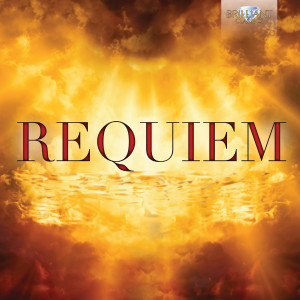
Giuseppe Verdi, Giacomo Puccini and 29 others
Requiem
-

Samuel Barber, Piotr Ilyich Tchaikovsky and 43 others
Romantic Piano Concertos, Vol. 1
-

Franz Schubert, Claude Debussy and 3 others
Romantischer Klavierabend
-

Robert Schumann and Mikhail Ivanovich Glinka
Schumann, Glinka: Trio Pathétique
-
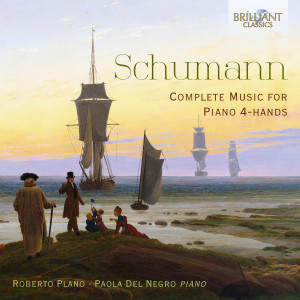
Robert Schumann
Schumann: Complete Music for Piano 4-hands
-
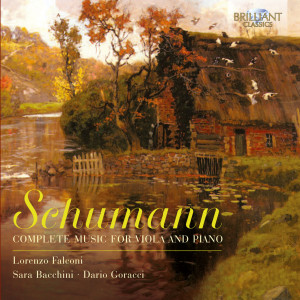
Robert Schumann
Schumann: Complete Music for Viola and Piano
-
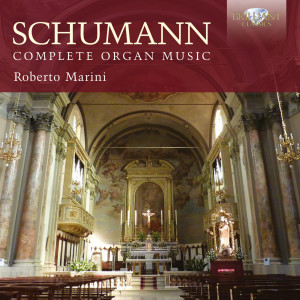
Robert Schumann
Schumann: Complete Organ Music
-

-

Robert Schumann
Schumann: Kreisleriana, Op. 16 - Fantasy, Op. 17
-

Robert Schumann
Schumann: Music for Cello & Piano, Vol. 2
-
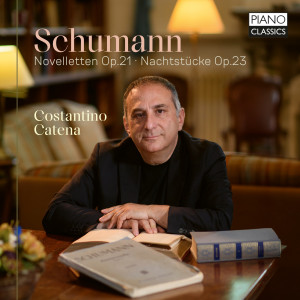
Robert Schumann
Schumann: Novelletten, Op. 21, Nachtstücke, Op. 23
-
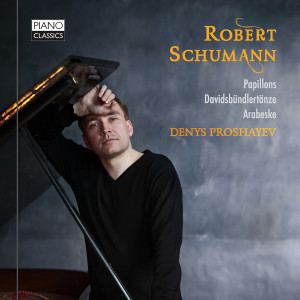
Robert Schumann
Schumann: Papillons, Davidsbündlertänze, Arabeske
-

Robert Schumann
Schumann: Piano Music
-

Robert Schumann
Schumann: Piano Music
-

Robert Schumann
Schumann: Piano Music
-
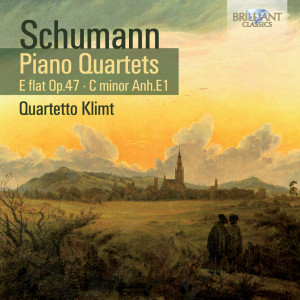
Robert Schumann
Schumann: Piano Quartets
-

Robert Schumann
Schumann: Piano Works
-
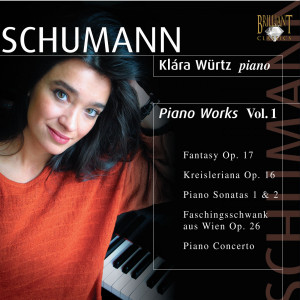
Robert Schumann
Schumann: Piano Works Vol. 1
-
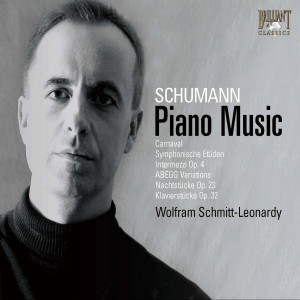
Robert Schumann
Schumann: Piano Works, Vol. 3
-

Robert Schumann
Schumann: String Quartet - Piano Quintet
-

Robert Schumann
Schumann: The Great Piano Works, Vol. 3
-
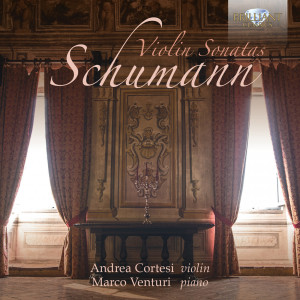
Robert Schumann
Schumann: Violin Sonatas
-
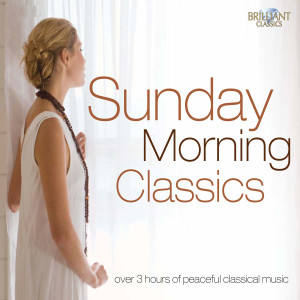
George Frideric Handel, Richard Wagner and 15 others
Sunday Morning Classics
-

Camille Saint-Saëns, Felix Mendelssohn and 10 others
The Classical Clarinet
-

Camille Saint-Saëns, Gabriel Fauré and 37 others
The Romantic Age, 500 Years of Classical Music
-

Antonín Dvořák, Camille Saint-Saëns and 13 others
The Romantic Cello
-

Camille Saint-Saëns, Gabriel Fauré and 19 others
Top 40 Favourite Classical Melodies
-
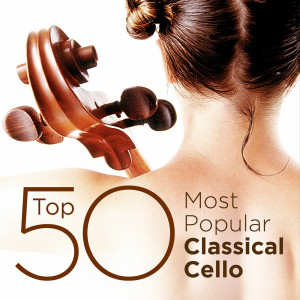
Antonín Dvořák, Camille Saint-Saëns and 14 others
Top 50 Most Popular Classical Cello
-

Maurice Ravel, Piotr Ilyich Tchaikovsky and 12 others
Top 50 Most Popular Classical Piano
-

Richard Wagner, Edward Elgar and 36 others
Top 50 Most Popular Classical Violin
-

Piotr Ilyich Tchaikovsky, Wolfgang Amadeus Mozart and 8 others
Top 50 Most Popular Classics for Kids
-
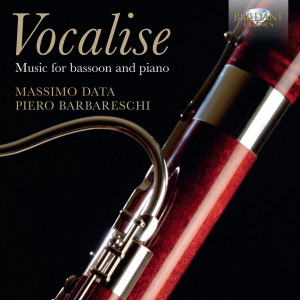
Maurice Ravel, Felix Mendelssohn and 5 others
Vocalise: Music for Bassoon and Piano
-
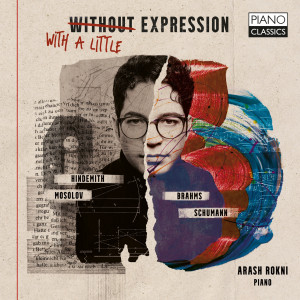
Johannes Brahms, Alexander Mosolov and 2 others
With . Without a Little Expression by Schumann, Hindemith, Mosolov, Brahms
